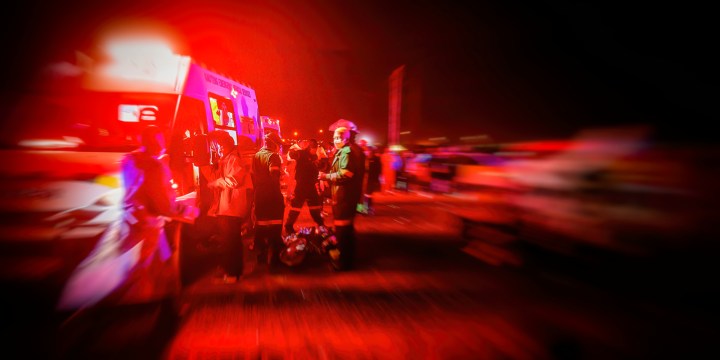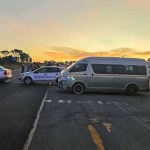TRAFFIC SAFETY OP-ED
The carnage on South Africa’s roads is also a human rights issue

There is a need to prioritise the safety of pedestrians, passengers using public transport and female road users in efforts to mitigate their risks of injury and death from road traffic crashes. We must consider road user vulnerability from a human rights perspective to ensure greater equity in the protection of all vulnerable road users.
More than 12,500 people lost their lives on South African roads during 2021. The country’s fatality rate of 26 deaths per 100,000 is among the highest in the world and contrasts sharply with a rate of around five deaths per 100,000 for countries in the EU.
However, not all road users are at the same level of risk when using South African roads. Pedestrians are the most vulnerable, accounting for 42% of all traffic fatalities last year. In addition, several other categories of road users are also at a disproportionately higher risk of injury or death, requiring a broad focus on the safety of vulnerable road users.
The term “vulnerable road users” is generally applied to road users who are physically less protected than motorists. This includes pedestrians, cyclists and motorcyclists. This categorisation of risk assesses vulnerability from a biomechanical perspective, focusing on the adverse impact on the human body by speed, crash duration, direction of impact and so forth.
However, recent South African research has indicated that beyond biomechanical vulnerability, road users are also subject to heightened risks from a range of contextual effects related to the physical traffic and social environments. These contextual effects are due largely to deficiencies in the transport system that arise from the prioritisation of vehicle occupants and motorised transport over other road users.
Distorted urban planning
In addition, in the South African context, distorted urban planning and socio-spatial disparities entrenched during apartheid have played a distinct and enduring role in increasing risk among vulnerable road users.
More specifically, road users from disadvantaged areas experience much greater traffic-related risk exposure due to their greater mobility. For instance, in many townships and informal settlements, people have to walk long distances, often on roads with minimal or no pavements, pedestrian crossings and traffic lights, to reach taxi and bus ranks and train stations.
Similarly, whereas in other contexts, road users such as passengers are generally not considered vulnerable, in the local context their greater reliance on public transportation provided by unregulated and identifiably unsafe operators such as minibus taxis also places them at greater risk for injury and death.
Further, women are also likely to be more vulnerable than men due to their relatively greater exposure from walking and as passengers of public transport, often with children and/or carrying loads.
Visit Daily Maverick’s home page for more news, analysis and investigations
Recent research by Unisa and the Road Traffic Management Corporation analysed 33,659 fatal crashes attributed to driver behaviour for the years 2016-2018. The study examined differences in risks for road traffic crashes and injuries for pedestrians, females and users of some modes of public transport in relation to various proxies for contextual influences.
The research revealed several key findings on the vulnerability of these three categories of road users. Across the three years, pedestrians accounted for the largest proportion of fatalities (39.5%) and were found to be almost twice as likely to die in crashes occurring on dirt roads, and more than twice as likely to die in crashes involving public transport. They also recorded a higher risk rate for death in crashes occurring in metropolitan municipal areas.
Vehicle passengers accounted for the next largest proportion of fatalities (33.7%) and were significantly more likely to die in crashes involving buses and minibuses and crashes occurring in local municipality areas. The fatality rate in local municipalities, characterised by greater proportions of rural areas, was 28.4 deaths per 100,000 – significantly higher than the 17.6 deaths per 100,000 recorded in urbanised metropolitan municipalities.
Moreover, while the overall fatality rate for men was more than three times higher than that for women, women were much more vulnerable in crashes involving public transport vehicles such as buses and minibus taxis.
The research highlights the need to prioritise the safety of pedestrians, passengers of public transport and female road users in efforts to mitigate their risks of injury and death from road traffic accidents.
Human rights
The identified role of contextual factors related to the level of infrastructure provided in the built environment, or lack thereof, indicates the need for considering road user vulnerability from a human rights perspective to ensure greater equity in the protection of all vulnerable road users.
Consequently, for policy and practice in the South African setting, we recommend a conceptualisation of road user vulnerability that adequately considers the broader contextual effects arising from the traffic environment, as well as those from structurally induced effects that reinforce social disadvantage and risk, such as social and area-level deprivation.
In this regard, we propose a conceptual framework that examines the three distinct dimensions of user, system and context on a continuum to better identify and prioritise the range of risks, ranging from biomechanical factors that are more directly applicable to the road user, to factors related to the broader environmental context defined by identifiable systemic and structural characteristics. This is illustrated in the figure below.

Proposed conceptual framework for road user vulnerability in South Africa (Source: Sukhai et al, 2021)
In addition to providing a more comprehensive account of the range of likely risk factors for vulnerable road users, such a conceptualisation encourages a departure from the more conventional focus of vulnerability that considers fatality risk overwhelmingly from the perspective of the road user.
In other words, rather than blaming the victim, we need to look deeper at the contextual and systemic factors which render people at greater risk of being victims in the first place.
Based on our findings, we propose several strategic priorities to mitigate the greater travel-related risk endured by vulnerable road users.
These reframe efforts away from the current predominant emphasis on modification of human behaviours, to improvement of the travel environment, including passive infrastructural upgrades such as safe walkways and crossings for pedestrians in disadvantaged settings; stricter monitoring and regulation of unsafe behaviours and practices by public transport operators; and the provision of safe and reliable public transport that is sensitive to the vulnerability of females. DM
Dr Anesh Sukhai, Prof Ashley van Niekerk and Prof Rajen Govender are with the Unisa Institute for Social and Health Sciences, and the SA Medical Research Council-Unisa Masculinity and Health Research Unit.



















A very complicated analysis of obvious and known problems. Do taxi passengers have or use seatbelts? The roads are a lawless place: I walk a lot and cars jump red lights every single time! No cameras, no traffic police. People drive at breakneck speed through residential areas – Barry Hertzog in Jhb is one example. Drunken drivers are not caught and not punished severely enough. Corruption at testing centres and poor driver training. Until these issues are addressed, people will die and be maimed every day. Government, at every level, does not care.
In South Africa, it is almost impossible to get a pedestrian to use a foot bridge. They would sooner walk across a busy highway underneath a footbridge, through a gap in a vandalized fence in the center of the highway. I dodge them everyday, on every trip I make on my daily route to work. Its mind boggling.